The sauce that’ll make your barbecues sing is only four simple steps away, thanks to Caitlin from Back to Spain.
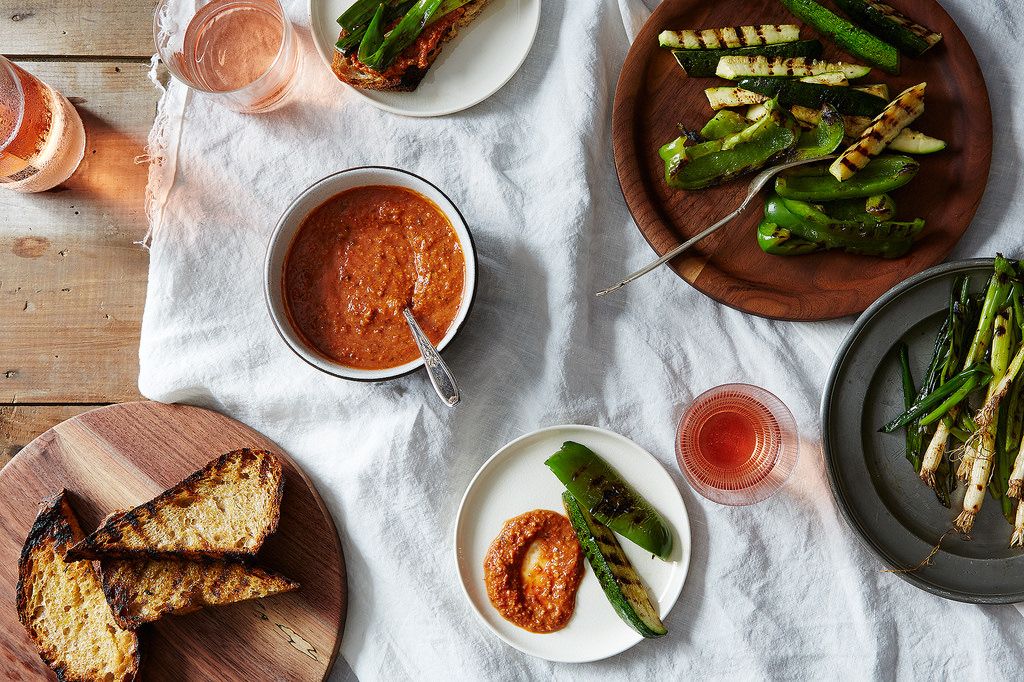
I discovered salsa romesco, a traditional sauce from Catalonia, a region in northeast Spain, when camping in the area—and immediately deemed it a summertime grilling essential. While I was tending to an assortment of vegetables and a glistening T-bone on a portable charcoal grill, one of my Catalan friends pulled out a container filled with a vibrant red-orange sauce—what I learned was a mixture of peppers, tomatoes, roasted nuts, garlic, and olive oil called romesco. I proceeded to slather it on everything that came off the grill that night.
Romesco is an excellent accompaniment for grilled fish, meats, vegetables—anything fit for dunking. Traditionally, it's served as a dip for charred calçots, a sweet Catalonian green onion. However you eat it, the good thing about making romesco is that it requires no precision: It could be nutty, garlicky, coarse, thinned with olive oil, or made with hazelnuts or almonds or a mix. There are tomatoes to roast, nuts to peel, peppers to soak, and pepper flesh to scrape, but once the components are ready, you just toss them in a food processor, pulse, and adjust to your liking. Your barbecue just went from a six to a ten.
Ready to make it? Here’s how:
1. Soak your peppers.
An hour or two before you want romesco ready, soak dried peppers by submerging them in warm water. In Spain, I used to buy dried ñoras at the market–but any dried, non-spicy pepper will do: Choricero and pequín come to mind—or ancho or chipotle. Make sure they’re completely submerged (you may have to construct a very unsophisticated contraption using jars or some such to weigh the peppers down).
Can’t find dried peppers? Not a problem. Roasted red peppers with their seeds removed can be substituted for dried peppers. No time for soaking? In a pinch, just throw in the whole dried pepper; just be sure to process it lots.
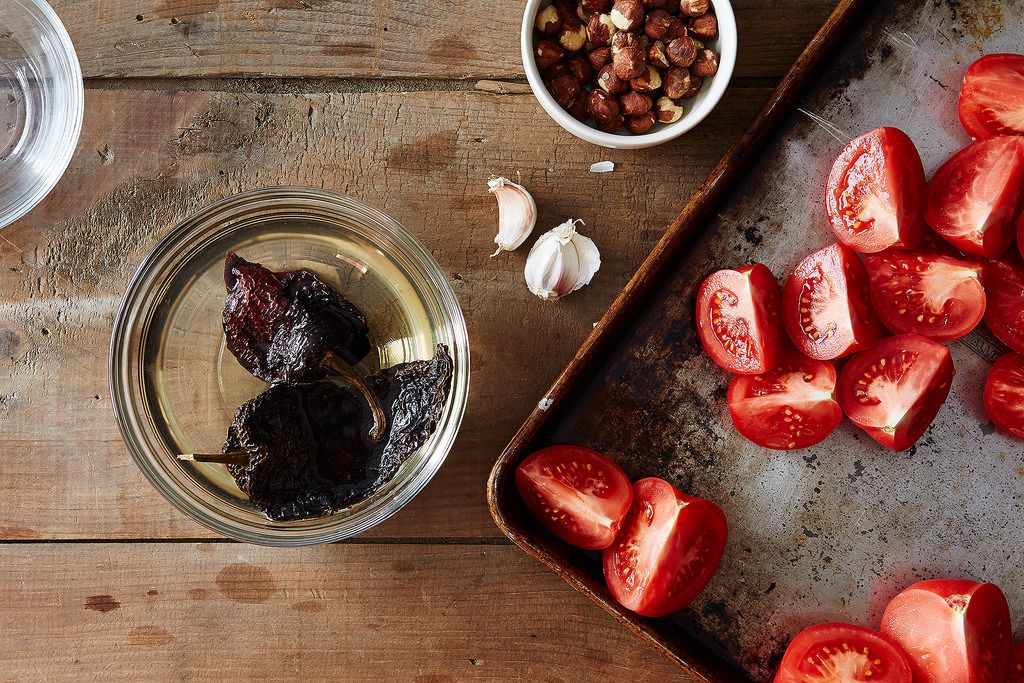
2. Roast your tomatoes, nuts, and garlic.
Meanwhile, quarter 4 or 5 medium-sized tomatoes. Into a baking dish they go! Toss them with a couple glugs of olive oil, throw on a pinch or two of crunchy salt, and roast the tomatoes at 300° F. When the tomatoes start to brown, throw a couple handfuls of skinless, dried nuts (almonds, hazelnuts, and/or walnuts) into the baking dish. If you only have skin-on, that’s alright: Just keep the nuts separated from the tomatoes, and then, when the nuts are toasted, rub them together in a dish towel and the skins will rub off. You could keep the skins on, but they might not make for the prettiest romesco. Roast nuts until they smell toasted.
When the tomatoes are golden brown and nuts are nearing the toasty finish line, toss a couple of unpeeled cloves of garlic into the same baking dish and let them cook with the tomatoes until everything is ready.
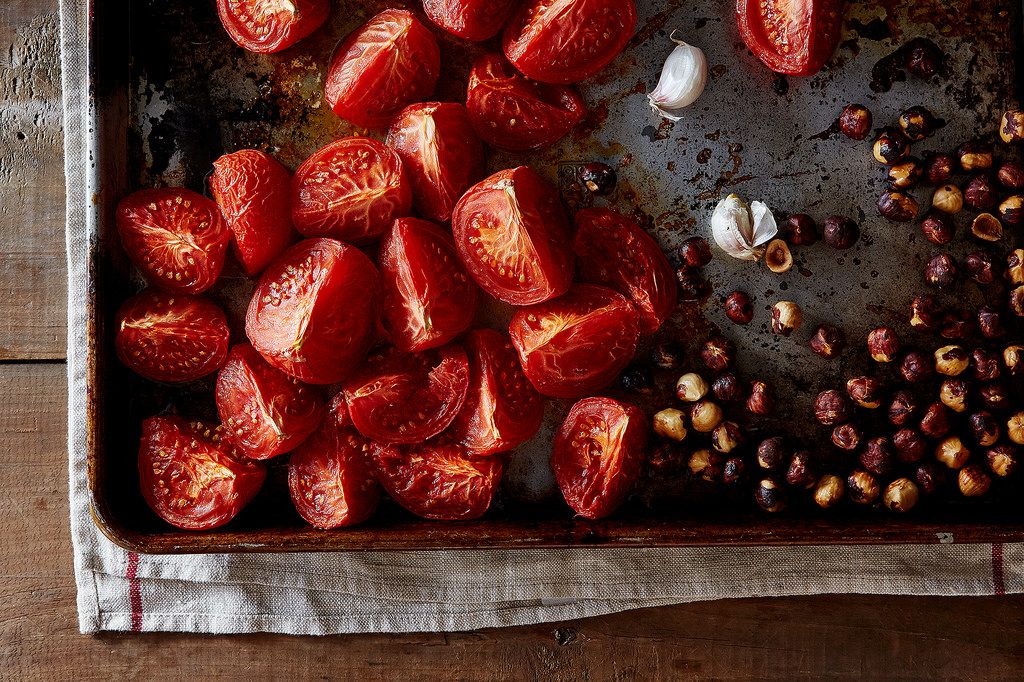
3. Scrape your peppers.
Use a paring knife to split the now-softened peppers in half. Remove the seeds by scraping the inside of the peppers.
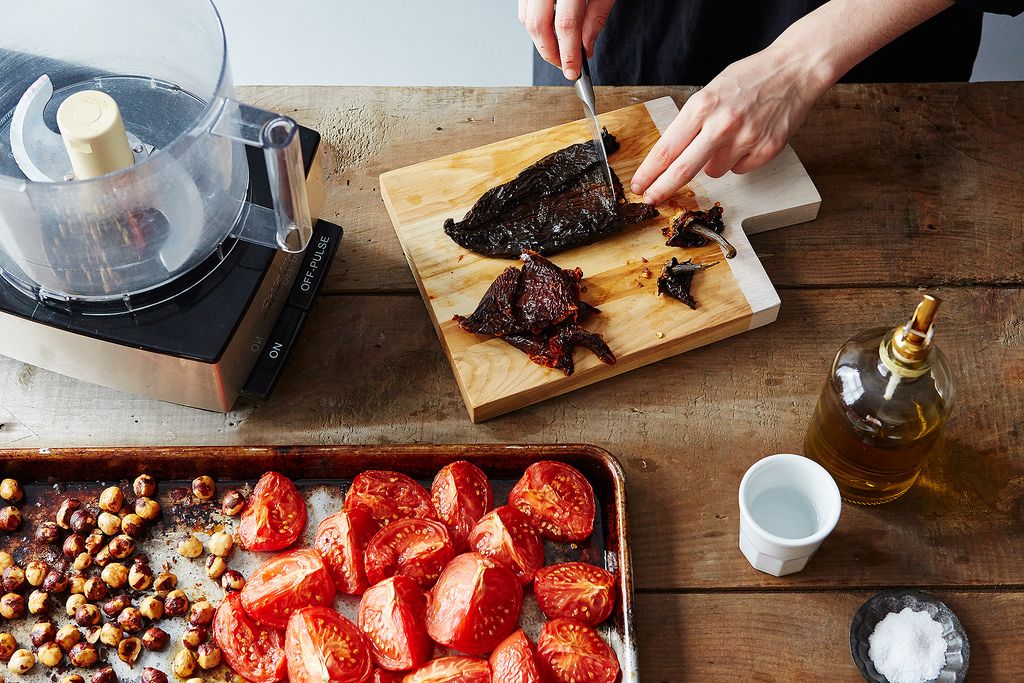
4. Process everything.
Throw the tray of tomatoes, nuts, and garlic, as well as the peppers, into the food processor and pulse. Drizzle in a half cup of extra-virgin olive oil while you continue processing. If you want to keep it really Spanish and use the good stuff, use an olive oil made from Arbequina olives—it’ll add a smoother floral aroma. Add a splash of vinegar (white, red wine, you get the picture). Taste and add salt to your liking. Drizzle in more olive oil if you want your sauce thinner. Add another splash of vinegar if you want to give it an extra bite.
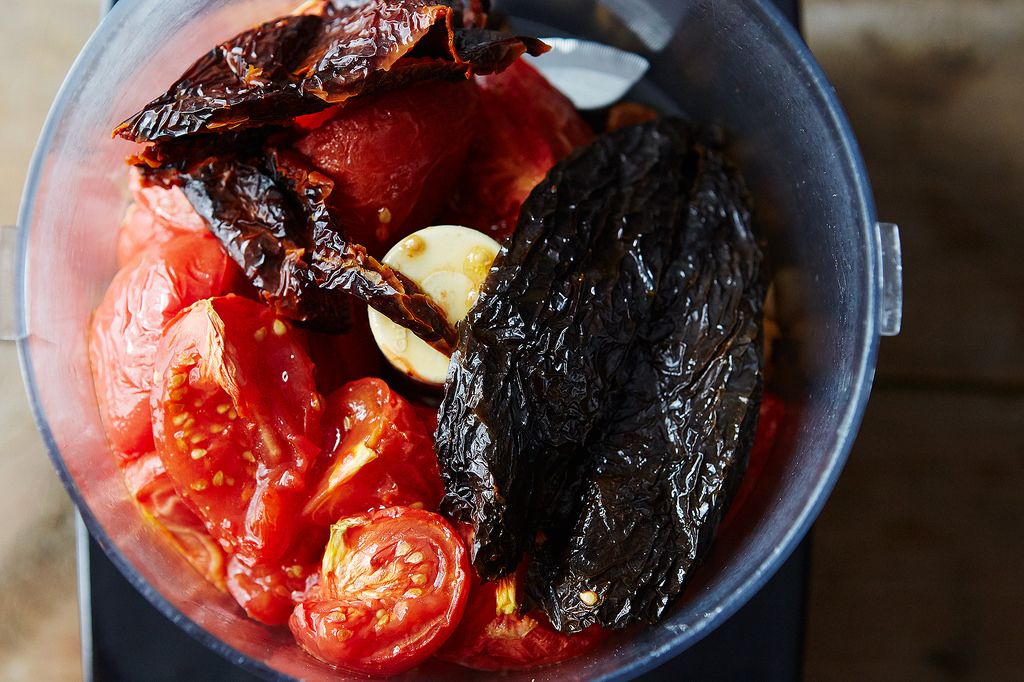
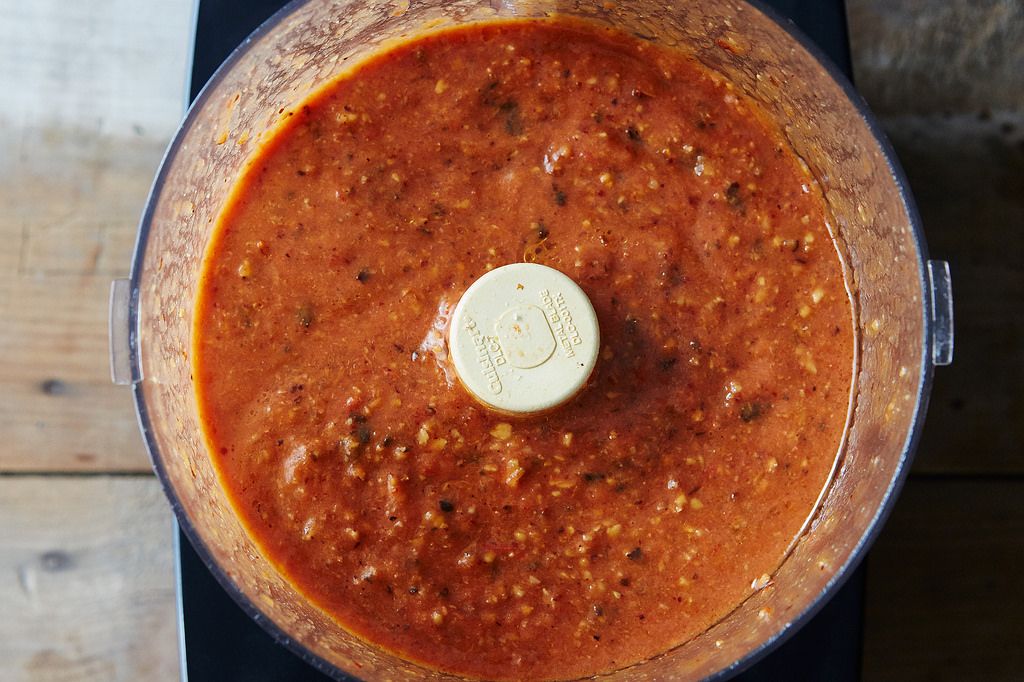
5. Buen provecho!
Cool and serve as a side for grilled meats, fish, vegetables, or a hunk of crusty bread—or stick it in a burger, slather it on potatoes, add it to salad dressing or roasted vegetables, and so on. Store in an airtight container in the fridge for up to a week.

Photos by Mark Weinberg
We're looking for contributors! Tell us what recipe you can make by heart without a recipe at editors@food52.com.







See what other Food52 readers are saying.